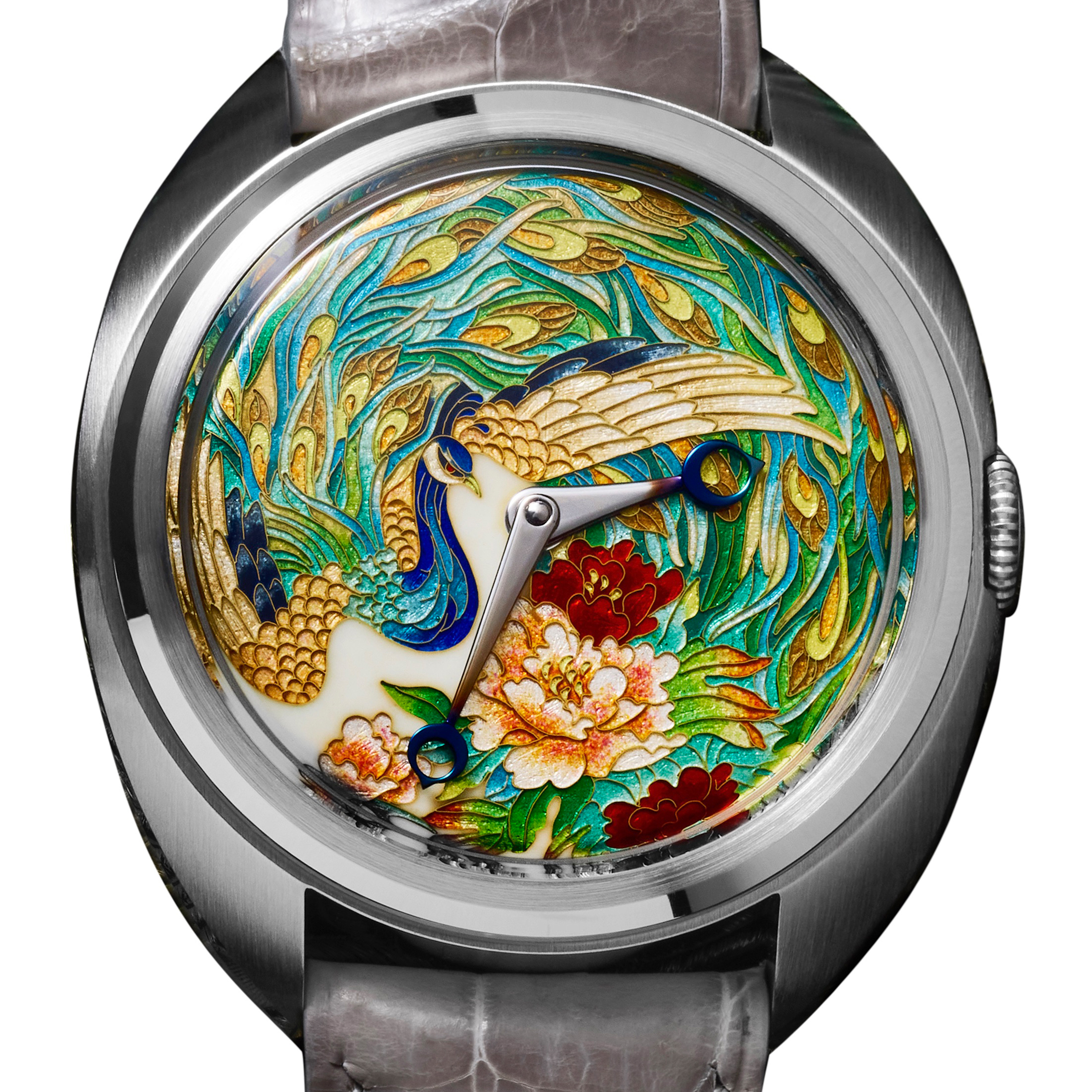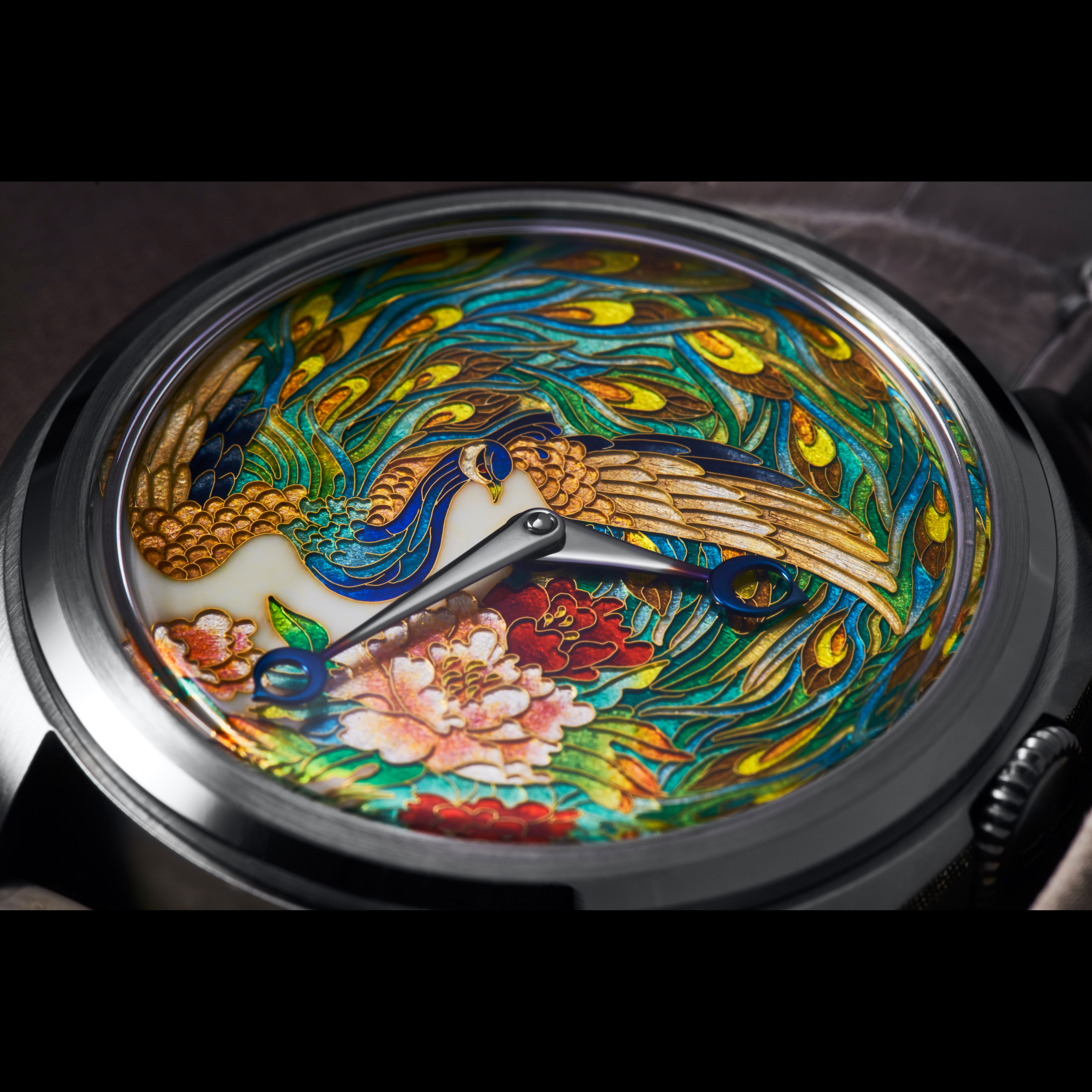
Century Cloisonné "Peacock and Peonies"
Power reserve: 45 h, 18000 vph
The Celadon Century “Peacock and Peonies”
- Handcrafted and assembled by AHCI master watchmaker Lin Yong Hua in his atelier, the surpassing quality of the Century is absolutely beyond all reproach.
- Designed to be the watch that will come to define Chinese high horology.
- An elegant case inspired by classical Chinese history and culture, paired with a movement exclusive to Celadon HH that is designed, created and finished by Master Lin Yong Hua (LYH).
- The vision behind the Celadon Century is to create a proudly Chinese watch of the highest quality, of wholly original design inspired by five millennia of Chinese culture and history, which would be a platform to showcase the very best of Chinese artisan crafts like enamel art, the various porcelains, silk, and gemstone carving.
- The movement itself would form the basis for a family of innovative complications developed down the line.
- The first series of the Century will be offered with cloisonné enamel dials created by Grandmaster Xiong Songtao, third generation heir to the family of enamel artisans of the Chinese imperial court.
- The Century Cloisonné showcases Celadon’s characteristic cloisonné enamel dials, an art form which has over 600 years of history in China. The technique of cloisonné first arrived in China from Persia in the 15th century Ming dynasty, and it was further developed and evolved independently from other enamel traditions elsewhere, flourishing with extravagant commissions by the imperial court and with many provinces forming their own distinct school of enamel technique.
- The cloisonné used in the Century originates from the Beijing tradition, also known as “Jingtai Lan”, the most prestigious in all of China given its status as the imperial capital. Our dials are handcrafted in the atelier of Grandmaster Xiong Songtao, whose family have been Imperial Enamellers to the Emperors of China for many generations. Grandmaster Xiong’s technique differs from European cloisonné by his use of thinner gold wire, which requires more skill and results in a more intricate image. He has also innovated a new technique of creating cloisonné for our dials which is actually much more complex and finer than the style used in imperial times.
- The entire process of creating the cloisonné enamel dials, from laying out the image on a solid silver base and deciding the individual enamel colours, to finely laying the gold wire to form the image by hand and tweezer, and finally firing around 25 times at 900 degrees in a specialised oven, involves over 45 individual steps.
- As a testament to the great skill required in creating our cloisonné dials, the gold wire used to form the cloisonné image range from 0.04 to 0.07mm in thickness, and takes an experienced artisan over 50 hours to form this intricate image by hand by carefully tweaking and laying the gold wire with a fine tweezer on the solid silver base that will become the watch dial, a canvas that is less than 30mm in diameter.
- At any step of the lengthy process, firing dozens of colours each individually in the oven, the dial can be destroyed due to chance.
- There is less than a 10% success rate with every enamel dial.
- The beauty of cloisonné enamel is that it will never change colour even after centuries.
- Also, even if they bear the same design, each enamel dial is completely unique because of the artisanal process of its creation.



